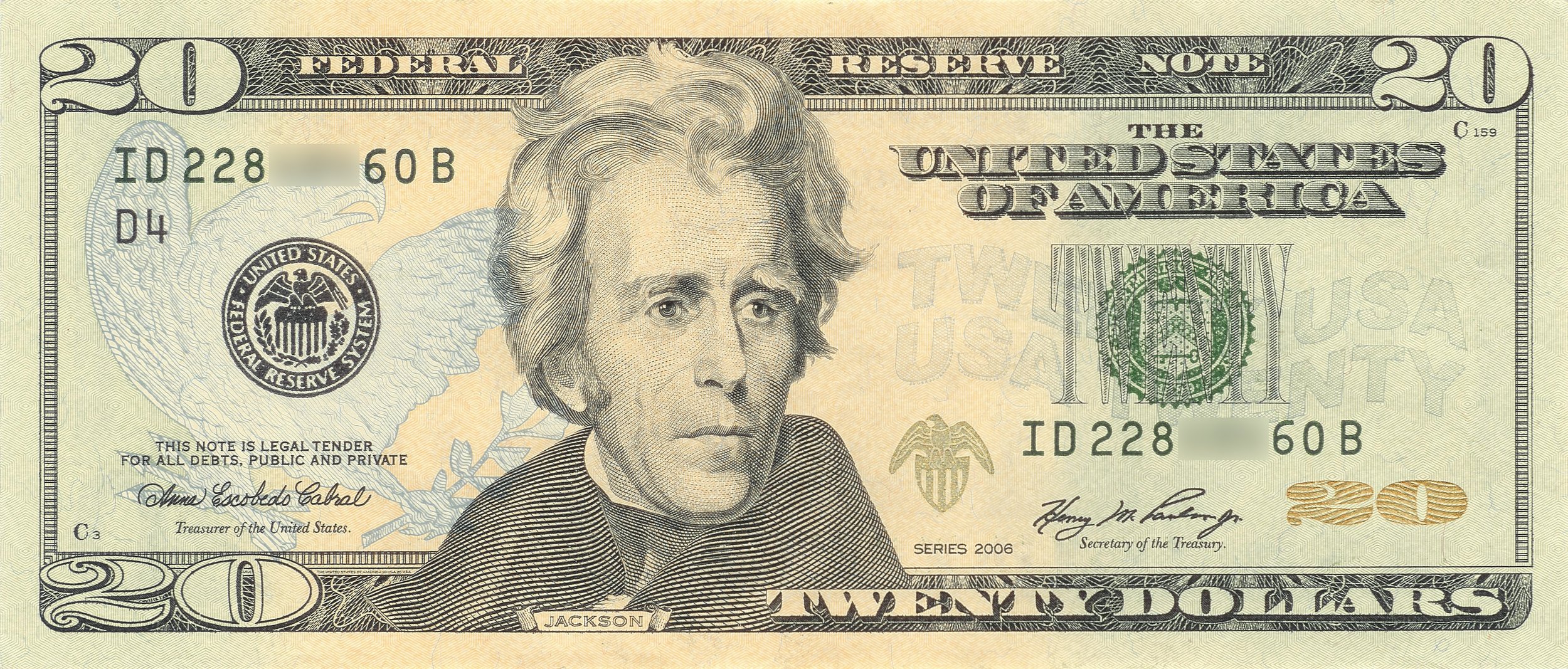The average $20 bill is in circulation for 7.9 years, according to a report by the Federal Reserve. That’s better than the $10 bill, which has a life span of only 4.5 years, but worse than the $100 bill, which is in circulation for 15 years.¹
Here’s a quick look at what goes into creating a $20 bill and what determines when a bill’s lifespan ends.
Paper
A $20 bill starts out life as part of a big, blank sheet of paper — but not just any paper. While most paper is made primarily from wood pulp, the paper used by the U.S. Bureau of Engraving and Printing doesn’t contain any wood at all. Currency paper is composed of a special blend of 75% cotton and 25% linen. It’s made with special watermarks and has tiny blue and red fibers embedded in it along with a special security thread.²,³
Each blank sheet is tracked from the time it leaves the mill until it is printed, and the entire shipment is continuously reconciled to make certain all are accounted for.⁴
Printing
These blank sheets of cotton and linen paper get printed four times.
Background images and colors are printed — both sides at once — using offset presses that are over 50 feet long and weigh over 70 tons. After drying for 72 hours, the portraits, vignettes, scrollwork, numerals, and letters are printed on the back using Intaglio presses that are a mere 40 feet long and weigh only 50 tons. After drying for another 72 hours — in special guarded cages — more portraits, vignettes, scrollwork, numerals, and letters are printed on the front using the Intaglio presses. Finally, the serial numbers, Federal Reserve seal, Treasury Department seal, and Federal Reserve identification numbers are printed using a letter press.⁵
Cutting and Wrapping
Once dry, these printed sheets are gathered in stacks of 100 to be cut by a specially designed guillotine cutter. Each new stack of 100 $20 bills is wrapped with a special paper band. Ten of these 100-note stacks are gathered, machine counted, and shrink-wrapped into a bundle. Then four of these shrink-wrapped bundles are collated together, given a special bar-code label, and shrink-wrapped again to create a brick of 4,000 bills, worth $80,000.⁶
Distribution and Circulation
The Treasury Department ships these newly printed $20 bills to the Federal Reserve Banks, who in turn pay them out to banks and savings and loans—primarily in exchange for old, worn-out bills. The new bills are handed out to customers of these institutions as they withdraw cash, either through tellers or through automated teller machines.⁷
An average $20 bill will change hands often, but even the U.S. Bureau of Engraving and Printing isn’t sure how many times a bill will move from one pocket to the next. Contrary to popular belief, the government doesn’t have any way to track individual bills.
There is a polyester security thread embedded in the paper that runs vertically up one side of each bill. If you look closely, the initials USA TWENTY along with the bill’s denomination and a small flag are visible along the thread from both sides of the bill. This thread makes currency more difficult to counterfeit, but cannot be tracked electronically.⁸
Withdrawal
Banks gather worn out and damaged currency, sending it to the Federal Reserve in exchange for new bills. The Federal Reserve then sorts through these bills to determine which are still usable and which are not. Those bills deemed usable are stored until they can go out again through the commercial banking system. Those deemed no longer usable are cut into confetti-like shreds. Most are then disposed of; a small portion is sold in five-pound bags through the Treasury’s website.⁹
1. Federal Reserve, 2016
2. Bureau of Engraving and Printing, 2016
3. Federal Reserve, 2016
4-6. Bureau of Engraving and Printing, 2016
7. Federal Reserve, 2016
8. Bureau of Engraving and Printing, 2016
9. Federal Reserve, 2016
The content is developed from sources believed to be providing accurate information. The information in this material is not intended as tax or legal advice. It may not be used for the purpose of avoiding any federal tax penalties. Please consult legal or tax professionals for specific information regarding your individual situation. This material was developed and produced by FMG Suite to provide information on a topic that may be of interest. FMG Suite is not affiliated with the named broker-dealer, state- or SEC-registered investment advisory firm. The opinions expressed and material provided are for general information, and should not be considered a solicitation for the purchase or sale of any security. Copyright 2018 FMG Suite.
DISCLAIMER: This website is for informational purposes only and does not constitute a complete description of our investment advisory services or any past performance. This website is neither a solicitation nor an offer to sell securities or investment advisory services except where we are appropriately registered or exempt from such registration. Information throughout this site, whether stock quotes, charts, articles, or any other statement or statements regarding market or other financial information, is obtained from sources which we and our suppliers believe to be reliable. However, we do not warrant or guarantee the timeliness or accuracy of this information. Nothing on this website should be interpreted to state or imply that past results are any indication of future performance. THERE ARE NO WARRANTIES, EXPRESSED OR IMPLIED, AS TO ACCURACY, COMPLETENESS, OR RESULTS OBTAINED FROM ANY INFORMATION POSTED ON THIS OR ANY ‘LINKED’ WEBSITE.
Back




